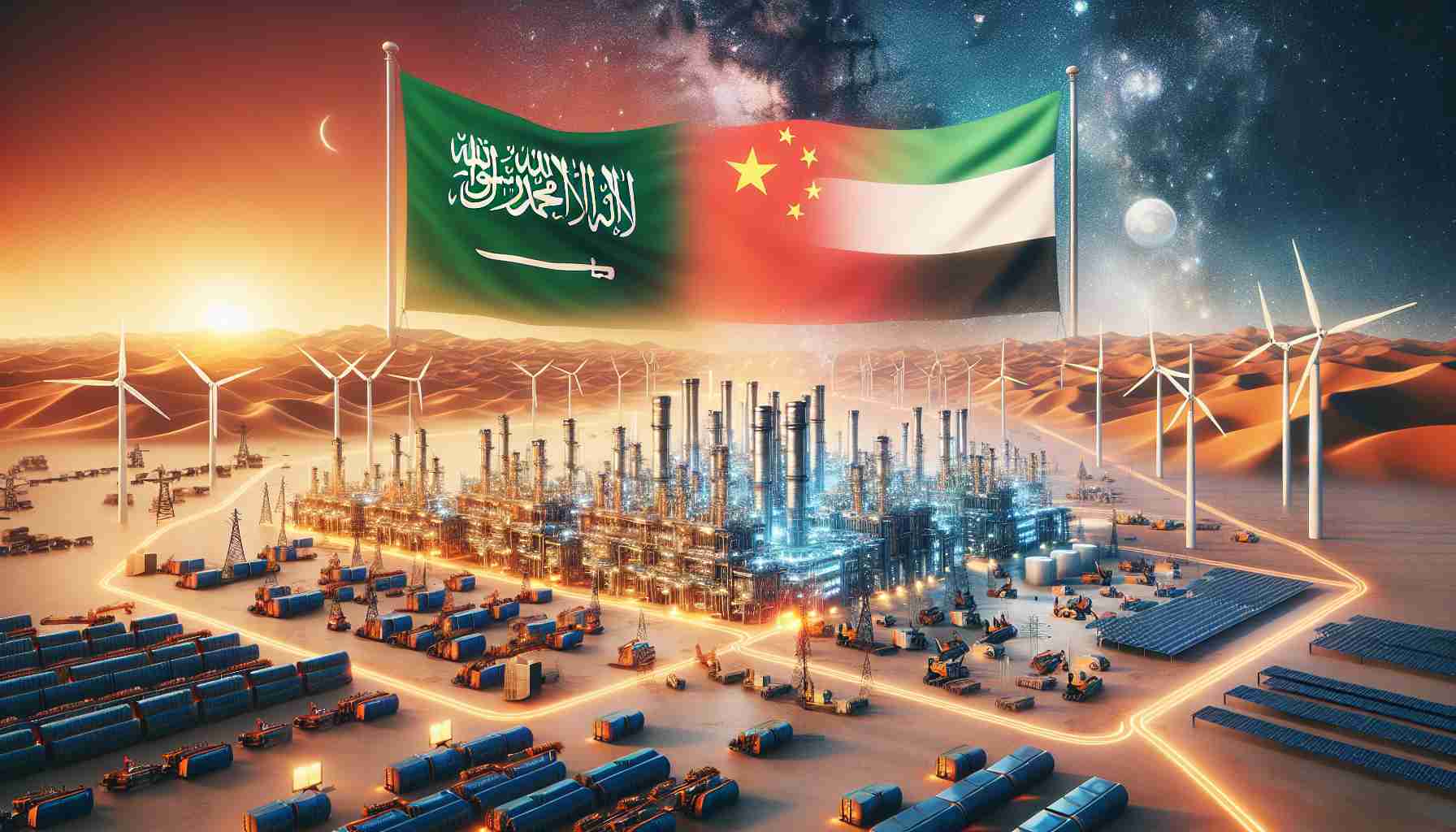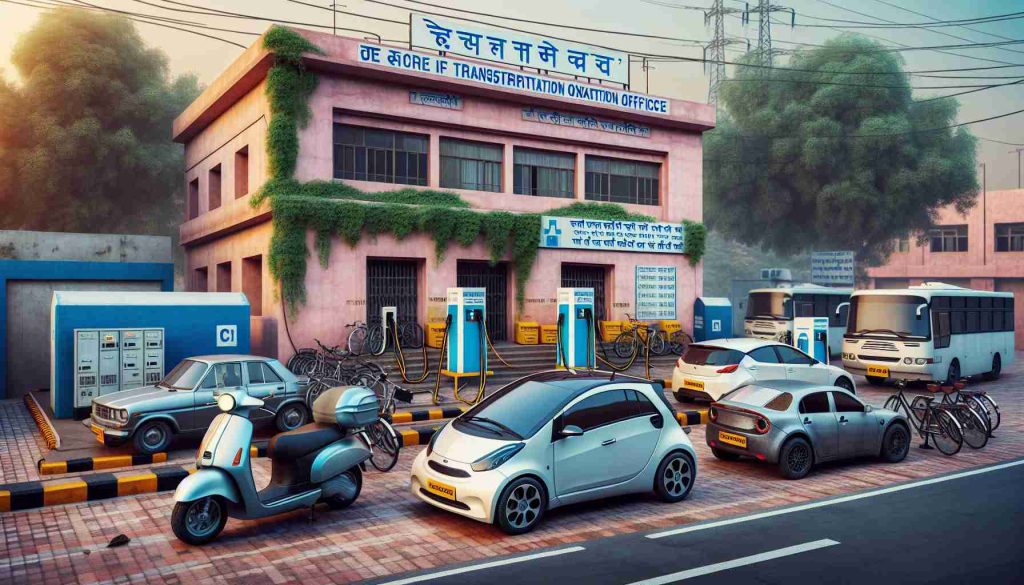In a strategic move to bolster their renewable energy capabilities, Saudi Arabia and China have announced a groundbreaking collaboration on a 2-gigawatt-hour (GWh) battery energy storage project. This partnership marks a significant step in both nations’ efforts to lead the global shift towards sustainable energy solutions.
The project aims to address one of the biggest challenges in the renewable energy sector—efficient and reliable energy storage. As the world increasingly relies on renewable sources such as wind and solar, the need for advanced battery technology that can store and distribute energy effectively has never been more crucial. By pooling their resources and expertise, Saudi Arabia and China plan to implement cutting-edge technologies to create a scalable and efficient energy storage solution.
China, a leader in battery technology and production, brings its advanced research and manufacturing capabilities to the table. Meanwhile, Saudi Arabia, with its ambitious Vision 2030 initiative, is keen to diversify its energy portfolio and reduce its dependence on oil, making this collaboration a strategic fit for both nations.
This ambitious project not only signifies a deepening of Saudi-China relations but also sets a precedent for future international collaborations aimed at tackling climate change. As countries around the world seek to increase their renewable energy capacities, partnerships like this offer a blueprint for leveraging shared strengths to create sustainable solutions for the planet.
The Future of Energy: Saudi Arabia and China Unite for Sustainable Solutions
The landmark collaboration between Saudi Arabia and China on a 2-gigawatt-hour (GWh) battery energy storage project underscores a crucial turn in the global energy landscape. This partnership not only propels both nations to the forefront of renewable energy innovation but also has significant implications for the environment, humanity, the economy, and the future of global energy sustainability.
Environmental Impact
The initiative primarily impacts the environment by addressing the pressing need for efficient energy storage, which is often seen as a bottleneck for renewable energy adoption. The capability to store energy efficiently from intermittent sources like solar and wind directly correlates with reduced carbon emissions. By ensuring a stable and reliable energy supply from these sources, this project mitigates dependence on fossil fuels, thereby decreasing air pollution and reducing the overall carbon footprint.
Humanitarian Benefits
For humanity, the project represents a pivotal step toward energy security and accessibility. As these technological advancements become globally available, they have the potential to provide reliable power to underserved and remote areas. Enhancing energy availability fosters improved health care, education, and living conditions, thus uplifting communities and offering a better quality of life, especially in regions where traditional power infrastructures are lacking.
Economic Significance
Economically, the collaboration signals a strategic shift toward green investments and innovation, promising lucrative opportunities in the renewable energy market. As countries worldwide commit to decreasing their reliance on carbon-intensive energy sources, initiatives like these pave the way for economic growth and job creation within emerging green industries. Nations investing in renewable technologies may also gain economic leverage by exporting expertise and technology, further embedding themselves in the global supply chain of clean energy solutions.
Global and Future Implications
This cooperation between Saudi Arabia and China serves as a model for international collaboration in addressing climate change—an issue that transcends borders. By leveraging each country’s strengths—be it China’s technological prowess or Saudi Arabia’s strategic economic reforms—this partnership accelerates progress toward a sustainable future. Additionally, it signals a shift in geopolitical alliances, as countries find common ground in the quest for sustainability and economic diversification, potentially influencing global diplomacy and international policy frameworks.
Looking ahead, such collaborations are crucial in shaping a future where sustainable energy is the norm rather than an exception. As more countries recognize the benefits and necessity of clean energy, international partnerships will be vital in scaling these technologies and making them more accessible worldwide. Ultimately, projects like this are instrumental in driving humanity toward a more sustainable, economically viable, and environmentally responsible future.
How Saudi Arabia and China’s Battery Storage Collaboration Sets New Benchmarks in Renewable Energy
The collaboration between Saudi Arabia and China on a 2-gigawatt-hour (GWh) battery energy storage project marks a significant advancement in the landscape of renewable energy. As the demand for sustainable energy solutions skyrockets, this partnership serves as a pivotal development in addressing global energy storage challenges, providing insights into future trends and innovations within the sector.
Project Specifications and Features
This groundbreaking project is poised to enhance energy storage capabilities significantly. By combining China’s superior battery technology and research with Saudi Arabia’s Vision 2030 energy diversification plans, the collaboration aims to develop state-of-the-art storage systems that are both scalable and efficient. The project is expected to feature next-generation lithium-ion battery technologies and leverage artificial intelligence to optimize energy management.
Innovation and Trends
One of the most noteworthy innovations expected in this project is the integration of advanced energy management systems that can adapt to unpredictable energy generation from renewable sources like solar and wind. These systems will incorporate real-time monitoring and predictive analytics to stabilize energy flow, thus setting new trends in battery storage capabilities and smart grid technologies.
Use Cases and Market Potential
The successful deployment of this 2 GWh storage system will demonstrate multiple use cases, from stabilizing energy supply in grid systems to supporting remote, off-grid locations where renewable energy deployment is critical. The project showcases the potential for large-scale battery storage solutions to seamlessly integrate with national grids, offering a template for other countries to adopt similar strategies.
Economic and Environmental Impacts
A key aspect of this collaboration is its potential to stimulate economic growth through job creation in both high-tech manufacturing and maintenance sectors. Environmentally, the project’s scalable solutions aim to significantly reduce carbon footprints by providing stable and robust energy storage that aligns with global climate goals.
Predictions and Future Prospects
Industry experts predict that this partnership could pave the way for more international collaborations, setting new standards in how global players can join forces to create sustainable energy solutions. The success of this project could potentially act as a catalyst for further investments in renewable energy infrastructure, not only in Asia and the Middle East but across the globe.
For more information on Saudi Arabia’s Vision 2030 strategy, visit the official Vision 2030 website. To explore developments in battery technology and energy management systems from China, check out the official Chinese government portal.
Conclusion
Saudi Arabia and China’s strategic move to develop a large-scale battery energy storage system stands as a testament to their commitment to sustainable energy. This endeavor is expected to push the boundaries of what is possible in energy storage, providing a viable solution to one of the most pressing challenges in renewable energy today. As such, the project not only strengthens their bilateral relationship but also sets a new benchmark for international cooperation in the face of global environmental challenges.















